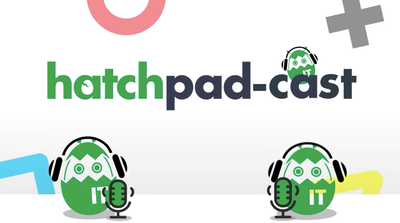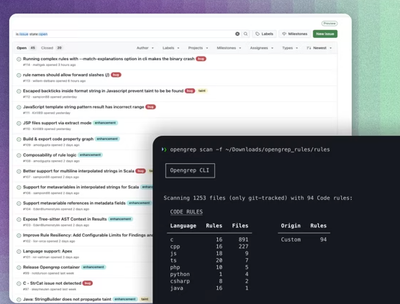
Research
Security News
Lazarus Strikes npm Again with New Wave of Malicious Packages
The Socket Research Team has discovered six new malicious npm packages linked to North Korea’s Lazarus Group, designed to steal credentials and deploy backdoors.
Tools to help you build data dashboards in Django.
https://github.com/wildfish/django-dashboards
.. image:: https://github.com/wildfish/django-dashboards/actions/workflows/build.yml/badge.svg :target: https://github.com/wildfish/django-dashboards
.. image:: https://codecov.io/gh/wildfish/django-dashboards/branch/main/graph/badge.svg :target: https://codecov.io/gh/wildfish/django-dashboards
.. image:: https://badge.fury.io/py/django-dashboards.svg :target: https://pypi.python.org/pypi/django-dashboards/
.. image:: https://img.shields.io/pypi/pyversions/django-dashboards.svg :target: https://pypi.python.org/pypi/django-dashboards/
Supports Django 3.2 to 4.2, on Python 3.9+.
See the full documentation <https://wildfish-django-dashboards.readthedocs.io>_ for details
of how django-dashboards works.
.. inclusion-quickstart-do-not-remove
This is a quickstart guide for creating a simple dashboard.
We recommend using a virtual environment such as pyenv <https://github.com/pyenv/pyenv>_ to manage your
dependencies and Python versions. From this point we assume you have a environment setup, activated & pip installed.
Create a new Django project::
# Create the project directory
mkdir demo
cd demo
# Install
pip install django-dashboards
# Set up a new project
django-admin startproject demo .
cd demo
django-admin startapp mydashboard
cd ..
# Sync the database
python manage.py migrate
First you need to setup a dashboard definition. Create a new file :code:demo/mydashboard/dashboards.py::
from dashboards.dashboard import Dashboard
from dashboards.component import Text, Chart
from dashboards.registry import registry
from demo.mydashboard.data import DashboardData
class FirstDashboard(Dashboard):
welcome = Text(value="Welcome to Django Dashboards!")
animals = Chart(defer=DashboardData.fetch_animals)
class Meta:
name = "First Dashboard"
registry.register(FirstDashboard)
Remember to register your dashboard class in order for it to work with the auto urls.
Data for the dashboard component can be inline (welcome) or come from a callable (animals).
In the example above the data for animals is returned from fetch_animals. We set this up now.
Create a new file :code:demo/mydashboard/data.py::
import json
class DashboardData:
@staticmethod
def fetch_animals(**kwargs) -> str:
data = {"giraffes": 20, "orangutans": 14, "monkeys": 23}
return json.dumps(dict(
data=[
dict(
x=list(data.keys()),
y=list(data.values()),
type="bar",
)
]
))
This returns a json object with values for x, y, and type. This is interpreted by the component and rendered as a bar chart.
In order to get the auto urls to register we need to update :code:demo/mydashboard/apps.py::
from django.apps import AppConfig
class MydashboardConfig(AppConfig):
default_auto_field = 'django.db.models.BigAutoField'
name = 'demo.mydashboard'
def ready(self):
# for registry
import demo.mydashboard.dashboards # type: ignore # noqa
Next we need to wire up the dashboard urls. In :code:demo/urls.py::
from django.contrib import admin
from django.urls import include, path
urlpatterns = [
path('admin/', admin.site.urls),
path('dashboards/', include('dashboards.urls')),
]
Finally add :code:dashboards and your new app :code:demo.mydashboard to INSTALLED_APPS in :code:demo/settings.py::
INSTALLED_APPS = [
...
"dashboards",
"demo.mydashboard",
]
And we're done.
Start the Django server from the command line.::
python manage.py runserver
The dashboard urls are automatically generated based on the app name and dashboard meta name.
For this demo the url will be :code:http://127.0.0.1:8000/dashboards/mydashboard/firstdashboard/
.. image:: _images/quickstart_dashboard.png :alt: Demo Dashboard
FirstDashboard was very simplistic, so lets expand on that and use some more components. We'll inherit
from FirstDashboard to create::
from dashboards.dashboard import Dashboard
from dashboards.component import Text, Chart, Table
from dashboards.registry import registry
from demo.mydashboard.data import DashboardData, ContentTypeTableSerializer, ContentTypeChartSerializer
class FirstDashboard(Dashboard):
welcome = Text(value="Welcome to Django Dashboards!")
animals = Chart(defer=DashboardData.fetch_animals)
class Meta:
name = "First Dashboard"
class SecondDashboard(FirstDashboard):
express_animals = Chart(defer=DashboardData.express_animals)
content_types = Table(value=ContentTypeTableSerializer)
content_types_chart = Chart(defer=ContentTypeChartSerializer, grid_css_classes="span-12")
class Meta:
name = "Second Dashboard"
registry.register(FirstDashboard)
registry.register(SecondDashboard)
and::
import json
import plotly.express as px
from django.contrib.contenttypes.models import ContentType
from dashboards.component.chart import ChartSerializer
from dashboards.component.table import TableSerializer
class DashboardData:
@staticmethod
def fetch_animals(**kwargs) -> str:
data = {"giraffes": 20, "orangutans": 14, "monkeys": 23}
return json.dumps(dict(
data=[
dict(
x=list(data.keys()),
y=list(data.values()),
type="bar",
)
]
))
@staticmethod
def express_animals(**kwargs):
data = dict(
animal=["giraffes", "orangutans", "monkeys"],
value=[20, 14, 23]
)
fig = px.pie(
data,
names='animal',
values='value',
)
return fig.to_json()
class ContentTypeTableSerializer(TableSerializer):
class Meta:
columns = {
"app_label": "App",
"model": "Model"
}
model = ContentType
class ContentTypeChartSerializer(ChartSerializer):
class Meta:
fields = ["app_label", "model"]
model = ContentType
def to_fig(self, df):
fig = px.scatter(
df,
x="app_label",
y="model",
)
return fig
Here we've added a few more components:
express_animals - A deferred pie chart, that instead of direct json renders via plotly express <https://plotly.com/python/plotly-express/>_ to_json(), which allows us to quick;y convert dicts and Pandas DataFrames into charts.content_types - A table (which could also be deferred) via our TableSerializer, which outputs data direct from a django model.content_types_chart - A chart which is an example of a ChartSerializer, again outputting data direct from a django model.Which looks like:
.. image:: _images/quickstart_dashboard.gif :alt: Demo Dashboard
.. inclusion-quickstart-end-do-not-remove
FAQs
Tools for building data dashboards with Django
We found that django-dashboards demonstrated a healthy version release cadence and project activity because the last version was released less than a year ago. It has 1 open source maintainer collaborating on the project.
Did you know?

Socket for GitHub automatically highlights issues in each pull request and monitors the health of all your open source dependencies. Discover the contents of your packages and block harmful activity before you install or update your dependencies.

Research
Security News
The Socket Research Team has discovered six new malicious npm packages linked to North Korea’s Lazarus Group, designed to steal credentials and deploy backdoors.

Security News
Socket CEO Feross Aboukhadijeh discusses the open web, open source security, and how Socket tackles software supply chain attacks on The Pair Program podcast.

Security News
Opengrep continues building momentum with the alpha release of its Playground tool, demonstrating the project's rapid evolution just two months after its initial launch.